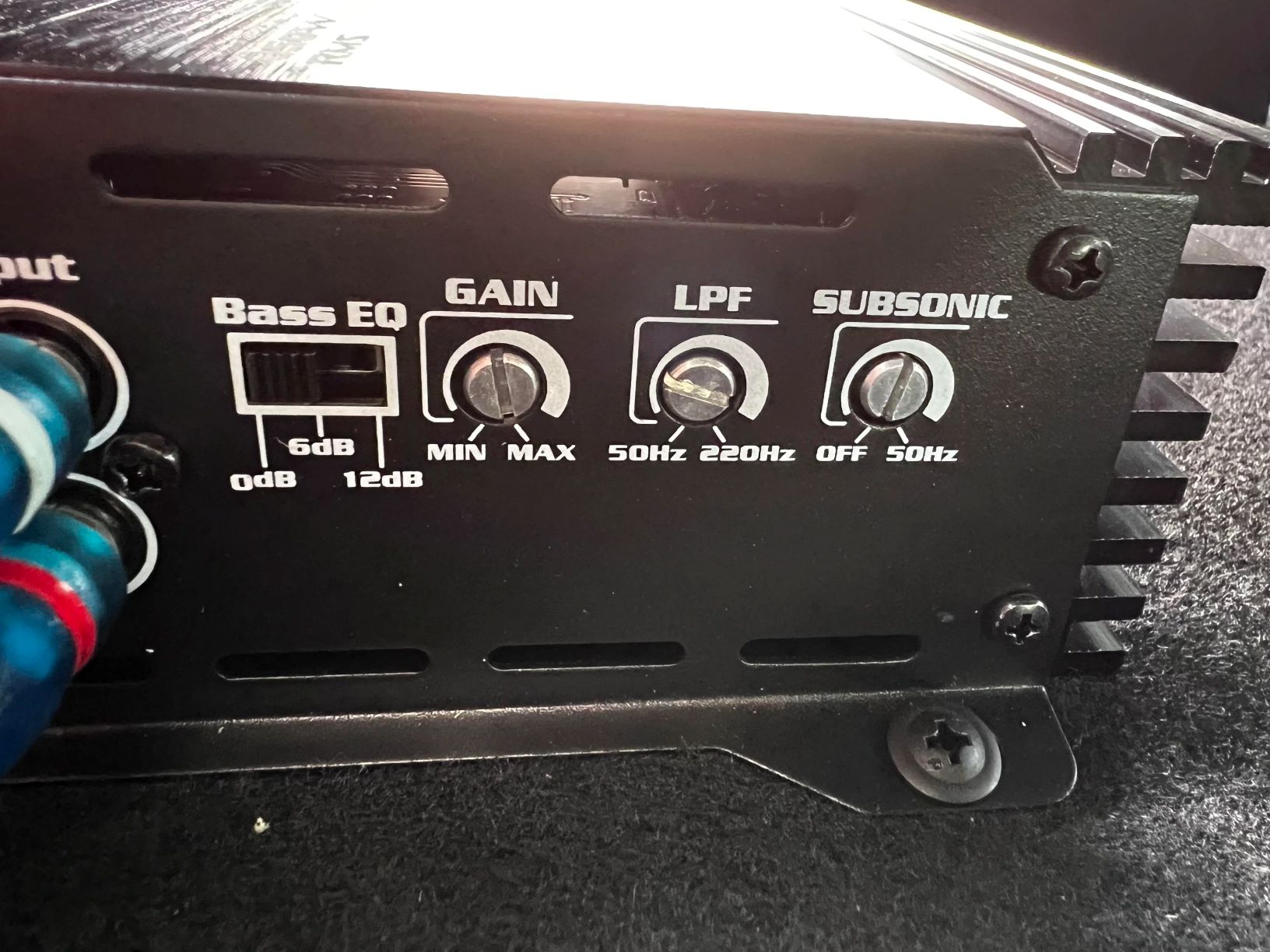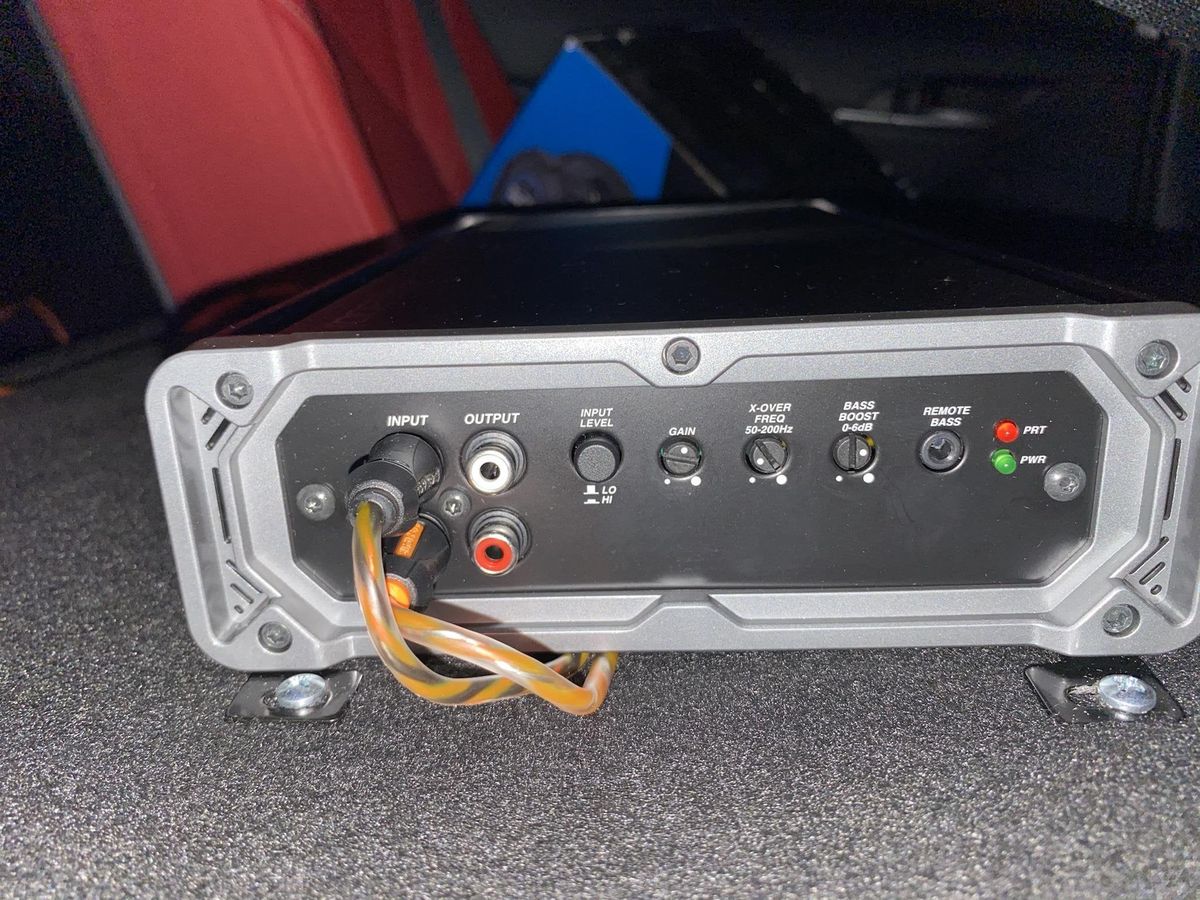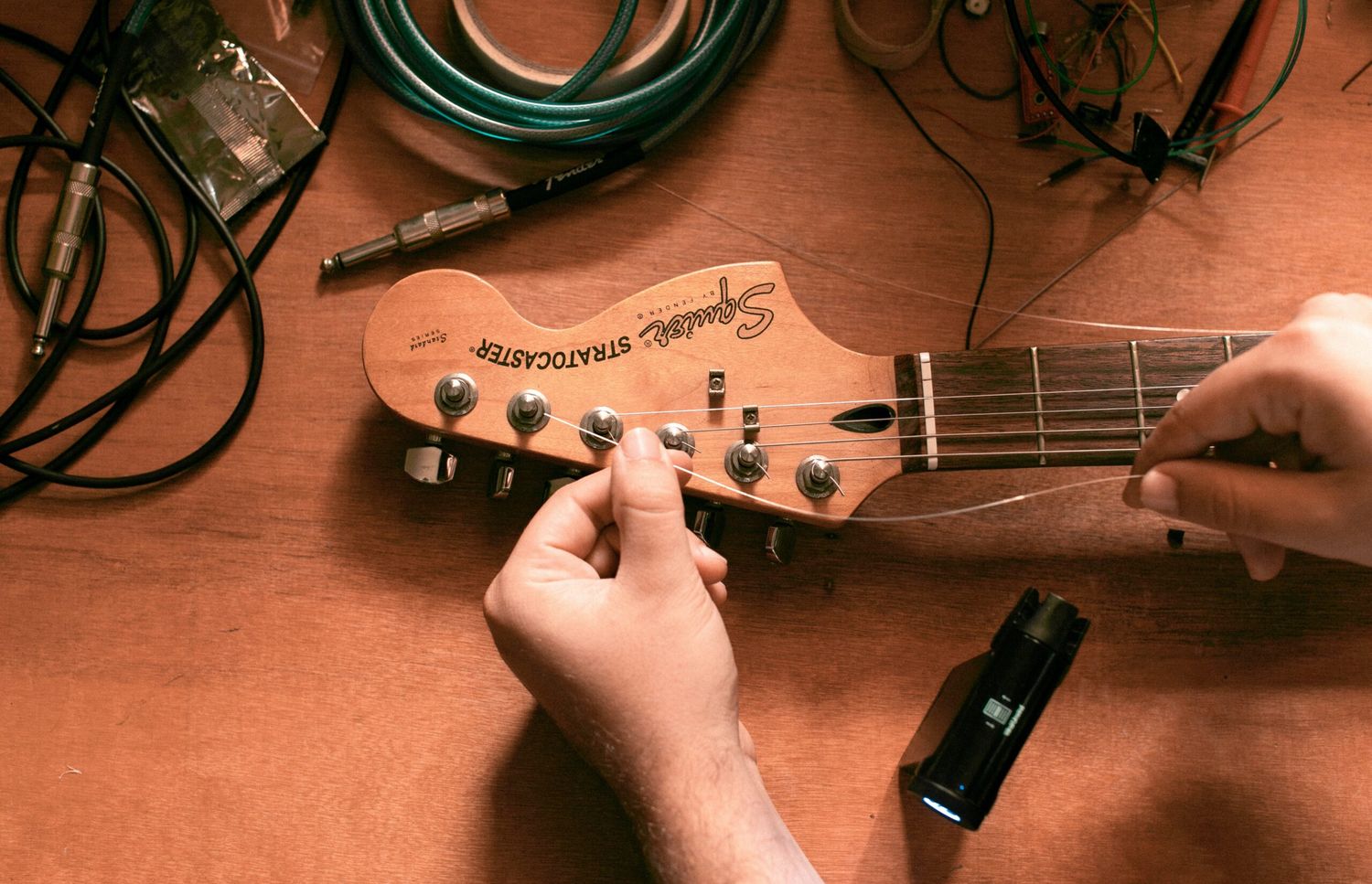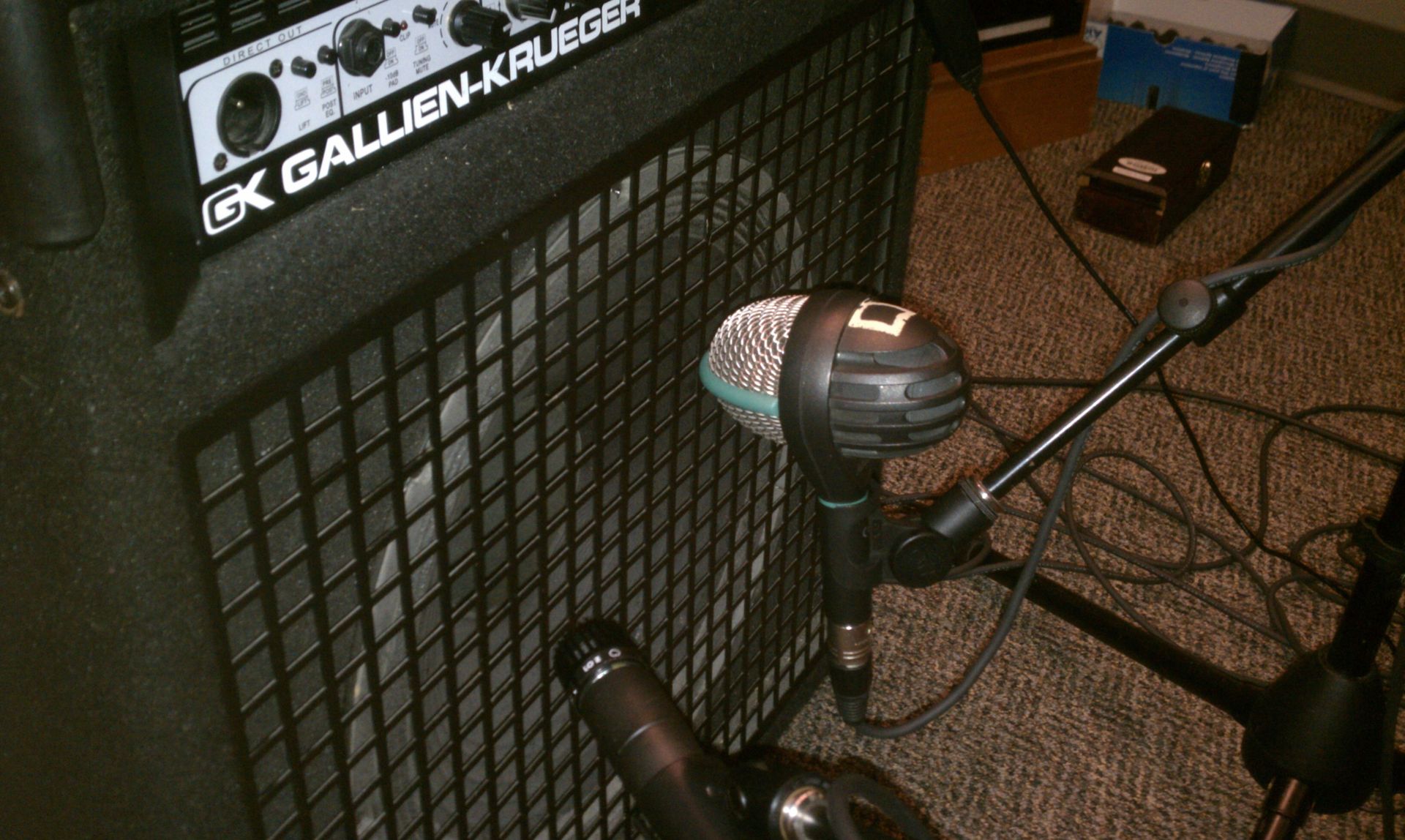Home>Devices & Equipment>Subwoofer>How To Tune Subwoofer Amp With Multimeter


Subwoofer
How To Tune Subwoofer Amp With Multimeter
Modified: January 22, 2024
Learn how to tune your subwoofer amp with a multimeter for optimal audio performance. Get the most out of your subwoofer with this step-by-step guide.
(Many of the links in this article redirect to a specific reviewed product. Your purchase of these products through affiliate links helps to generate commission for AudioLover.com, at no extra cost. Learn more)
Table of Contents
Introduction
Welcome to the world of subwoofers, where bass reigns supreme and the music thumps with a power that shakes your very core. Whether you’re a music enthusiast, a gamer, or a movie lover, a well-tuned subwoofer can take your audio experience to new heights.
But how do you ensure that your subwoofer is delivering the best possible sound? One way is by properly tuning the subwoofer amp with a multimeter. This process allows you to accurately adjust the gain levels and ensure optimal performance from your subwoofer.
In this article, we will guide you through the step-by-step process of tuning your subwoofer amp using a multimeter. By following these instructions, you will be able to maximize the potential of your subwoofer, achieving a balanced and powerful bass response.
Before we dive into the tuning process, it’s essential to understand the importance of proper subwoofer setup and how it contributes to overall audio quality. A subwoofer is designed to reproduce low-frequency sounds, adding depth and impact to your audio. However, without proper calibration, it may overpower or underperform, affecting the overall sound balance.
Tuning your subwoofer amp ensures that it is correctly matched to your speakers and provides an ideal bass response. By measuring and adjusting the gain levels, you can achieve the perfect balance between the subwoofer and the rest of your audio system, producing clear and powerful bass without distortion.
Now that you understand the significance of proper subwoofer tuning let’s move on to the next section: gathering the necessary tools.
Step 1: Gather the Necessary Tools
Before you can begin the process of tuning your subwoofer amp with a multimeter, it’s crucial to have the right tools at your disposal. Here’s a list of items you will need:
- A multimeter: This device measures electrical voltage, current, and resistance. Make sure to choose a multimeter that can accurately measure AC voltage.
- A test tone CD or audio file: This will provide you with a consistent test signal for calibrating your subwoofer. You can find test tones online or use a dedicated test tone CD.
- An RCA Y-cable: This cable allows you to connect the multimeter to the subwoofer amp. Ensure that it matches the type of input and output connections on your equipment.
- Speaker wire: You will need speaker wire to connect your subwoofer to the amp. Make sure it is of sufficient length to reach between the two devices.
- A screwdriver or Allen wrench: This will be required to adjust the gain control on your subwoofer amp.
Once you have gathered these tools, you’re ready to move on to the next step of the tuning process. With the right equipment in hand, you’ll be well-prepared for achieving optimal sound quality from your subwoofer.
Note: It’s always a good idea to refer to the user manual or manufacturer’s instructions for your specific subwoofer and amplifier. While the basic tuning process will generally be the same, there may be slight variations depending on the equipment you are using. Now that you have everything you need, it’s time to set up the multimeter for tuning your subwoofer amp.
Step 2: Set Up the Multimeter
Setting up the multimeter properly is crucial for accurate measurement during the subwoofer amp tuning process. Follow these steps to configure your multimeter:
- Turn on the multimeter and set it to measure AC voltage. This is important because the output of the subwoofer amp is an AC signal.
- Ensure that the multimeter is set to the appropriate voltage range. For most home audio systems, a range of 0-200 volts AC should be sufficient. Refer to your multimeter’s user manual for specific instructions on changing the voltage range.
- Double-check that the multimeter leads are securely connected to the appropriate jacks. The black lead should be plugged into the COM jack, and the red lead should be inserted into the VΩmA jack.
- Verify that the multimeter is functioning correctly by testing it on a known AC voltage source. This can be a wall outlet or any other device that provides AC power. The multimeter should display a voltage reading when connected to the source.
Once you have set up the multimeter correctly and confirmed its functionality, you’re ready to move on to the next step: connecting the multimeter to the subwoofer amp. Proper connection is vital for accurate measurement and adjustment of the gain levels.
Step 3: Connect the Multimeter to the Subwoofer Amp
Now that your multimeter is set up, it’s time to connect it to your subwoofer amp. Follow these steps to ensure a proper connection:
- Locate the RCA output jack on your subwoofer amp. This is typically labeled as “Sub Out” or “LFE Out.” Insert one end of the RCA Y-cable into this jack.
- Connect the red RCA connector on the other end of the Y-cable to the red multimeter lead or positive (+) terminal.
- Connect the white or black RCA connector on the Y-cable to the black multimeter lead or negative (-) terminal.
- Ensure that the connections are secure by giving them a gentle tug. Loose connections can lead to inaccurate readings.
With the multimeter properly connected to the subwoofer amp, you have established the necessary link to measure the voltage. The next step involves adjusting the gain levels on your subwoofer amp for optimal performance.
Step 4: Adjust the Gain Level
Adjusting the gain level on your subwoofer amp is an essential step in achieving the right balance between your subwoofer and the rest of your audio system. The gain control determines the input signal strength that the amplifier receives, and improper adjustment can result in distorted or weak bass.
Follow these steps to adjust the gain level on your subwoofer amp:
- Set the volume controls on your audio source (such as a receiver or preamp) to their normal listening level. This ensures that the input signal is at an optimal level for testing.
- Play a test tone through your audio system. You can use a test tone CD or an audio file that generates a consistent frequency for subwoofer testing.
- Slowly increase the subwoofer amp’s gain control while paying attention to the sound produced by the subwoofer. Stop when you reach a point where the bass is audible and well-balanced with the rest of the audio.
- Avoid turning the gain control too high, as this can lead to distortion or overpowering bass. Similarly, setting it too low will result in weak or barely noticeable bass.
Remember, finding the right gain level is subjective and may require some trial and error. Listen carefully and make adjustments until you achieve a balanced and impactful bass response that complements your audio system.
Once you have set the gain level, it’s time to move on to the next step: measuring the voltage output with the multimeter.
Step 5: Measure the Voltage
Measuring the voltage output of your subwoofer amp is a crucial step in the tuning process. It allows you to verify that the gain level you have set is within the acceptable range and ensures that you achieve the desired performance from your subwoofer. To measure the voltage output, follow these steps:
- Ensure that the test tone is still playing through your audio system.
- Set your multimeter to measure AC voltage and select an appropriate voltage range.
- Hold the red (+) lead of the multimeter against the center pin of the RCA connector, which is the positive (+) output of the subwoofer amp.
- Connect the black (-) lead of the multimeter to the outer part of the RCA connector or any other ground point on your subwoofer amp.
- Observe the voltage reading on the multimeter display. This reading represents the output voltage of your subwoofer amp.
Compare the measured voltage to the recommended range provided by the manufacturer of your subwoofer amp. If the voltage falls within this range, congratulations! Your subwoofer amp is properly tuned so far. However, if the voltage is too high or too low, adjustments will be necessary.
If the voltage is too high, you should lower the gain on your subwoofer amp and measure the voltage again. Conversely, if the voltage is too low, increase the gain and re-measure to achieve the desired output level.
Repeat this process until you have achieved the appropriate voltage output within the recommended range.
Now that you have measured the voltage output, it’s time to fine-tune the gain on your subwoofer amp in the next step.
Step 6: Fine-Tune the Gain
After measuring the voltage output, you may find that further adjustments are needed to ensure optimal performance from your subwoofer. Fine-tuning the gain allows you to make precise adjustments to achieve the desired bass response. Follow these steps to fine-tune the gain on your subwoofer amp:
- Refer to the measured voltage from the previous step and compare it to the recommended range provided by the manufacturer. If the voltage is within this range, you may not need to make any further adjustments.
- If the voltage is too high, decrease the gain on your subwoofer amp slightly. Re-measure the voltage to see if it has reduced to a desired level.
- If the voltage is too low, increase the gain slightly and measure the voltage again to see if it falls within the recommended range.
- Make small incremental adjustments to the gain control until you achieve the desired voltage output and overall bass response.
As you fine-tune the gain, take the time to listen to different audio tracks that contain a wide range of bass frequencies. This will help you assess if the subwoofer is producing clear and balanced bass without distortion or overpowering other frequencies.
Remember, fine-tuning the gain requires patience and careful listening. It’s a subjective process that depends on personal preference and the characteristics of your audio system. Take your time to find the perfect balance that suits your taste and delivers the best audio experience.
Once you are satisfied with the gain adjustments, you can proceed to the final step: testing the subwoofer performance.
Step 7: Test the Subwoofer Performance
Now that you have completed the tuning process for your subwoofer amp, it’s time to put it to the test and evaluate its performance. Testing the subwoofer allows you to confirm that the adjustments you made have resulted in the desired bass response and overall audio experience. Follow these steps to test the subwoofer performance:
- Play a variety of audio content that contains a wide range of bass frequencies, such as music tracks, movie soundtracks, or video game sound effects.
- Listen carefully to the performance of the subwoofer. Pay attention to the clarity, depth, and impact of the bass. Ensure that the bass is well-integrated with the rest of the audio and does not overpower or distort other frequencies.
- Adjust the volume and tone controls on your audio system to further fine-tune the overall sound balance. Make minor adjustments to enhance the bass response without sacrificing the clarity of other audio elements.
- Continue to experiment with different types of audio content to get a comprehensive understanding of how the subwoofer performs across various genres and formats.
During the testing phase, it’s essential to trust your ears and make subjective judgments based on your personal preferences. Everyone’s audio taste and room acoustics vary, so adjust the settings accordingly to achieve the best sound experience for your specific environment.
If you find that further adjustments are necessary after testing, revisit the previous steps to fine-tune the gain, measure the voltage, and make any necessary changes to achieve the desired result.
Congratulations! You have successfully tuned your subwoofer amp using a multimeter. By following these steps and carefully adjusting the settings, you can now enjoy a rich, powerful bass that enhances your audio experience to new heights.
Remember, the process of tuning your subwoofer amp may take some time and experimentation, but the end result is well worth the effort. Enjoy your newfound audio bliss!
We hope this guide has been helpful in your journey to tune your subwoofer amp with a multimeter. If you have any questions or need further assistance, consult the user manual of your specific equipment or reach out to the manufacturer for additional support.
Happy listening!
Conclusion
Tuning your subwoofer amp with a multimeter is a crucial step in achieving the best possible sound quality from your audio system. By carefully adjusting the gain levels and measuring the voltage output, you can ensure that your subwoofer is producing clear, balanced, and powerful bass without distortion.
Throughout the tuning process, it’s important to trust your ears and make subjective judgments based on personal preferences. Everyone’s audio taste and room acoustics vary, so take the time to find the perfect balance for your specific setup.
Remember to gather the necessary tools, set up the multimeter correctly, connect it to the subwoofer amp, adjust the gain levels, measure the voltage, fine-tune the gain, and test the subwoofer performance. Each step in the process is crucial for achieving optimal results.
Keep in mind that while this guide provides a general overview of the tuning process, it’s always a good idea to consult the user manual or manufacturer’s instructions for your specific subwoofer and amplifier. They may provide additional guidance or specifications tailored to your equipment.
By following these steps and taking the time to properly tune your subwoofer amp, you can experience the full potential of your audio system, immersing yourself in deep, rich bass that brings your music, movies, and games to life.
We hope this guide has been helpful, and we encourage you to embrace the process of tuning your subwoofer amp. Enjoy the enhanced audio experience and the powerful impact of well-tuned bass!











